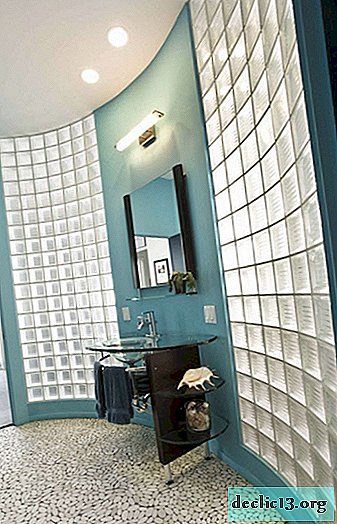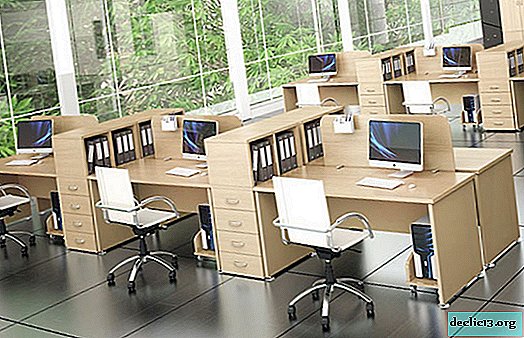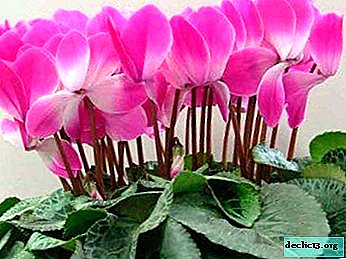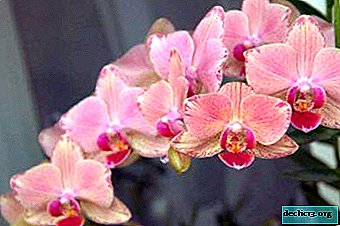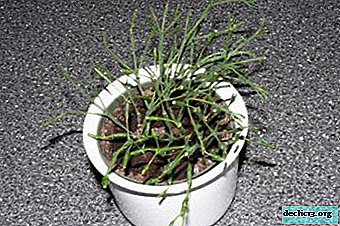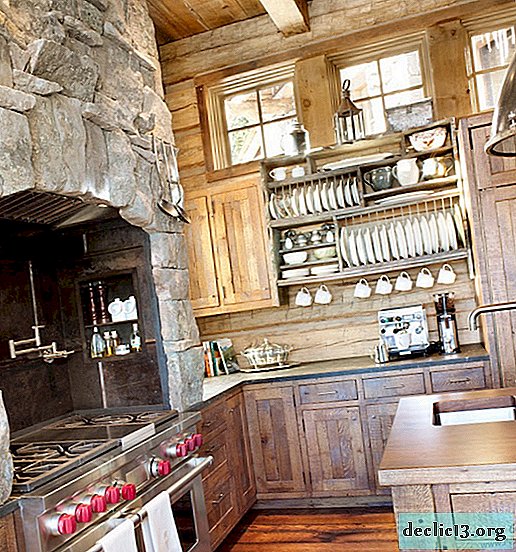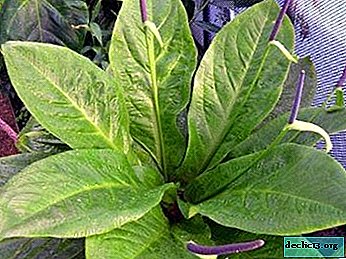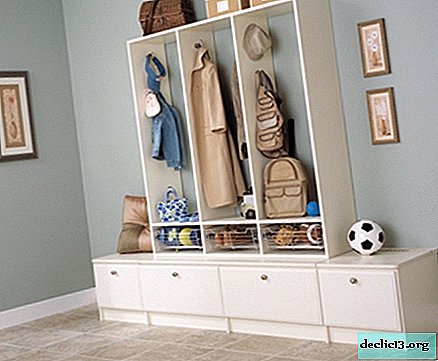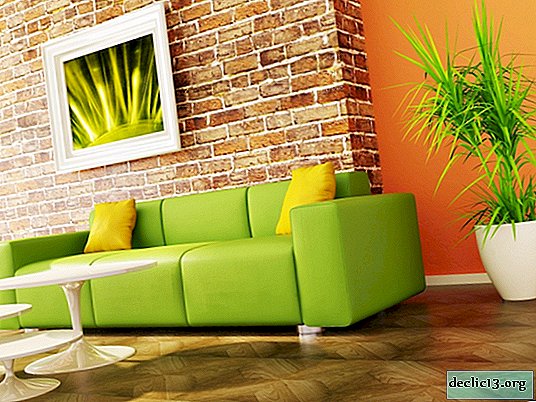Do I need drainage for an orchid and which one is better to choose?
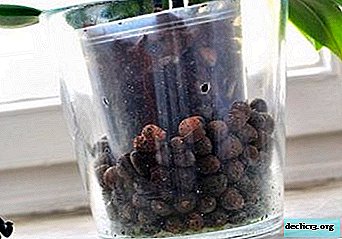
Indoor flowers, for the most part, do not accept excess moisture. Optimum soil proportions: 50% solids, 35% liquid, 15% air.
The constant presence of roots in moist soil leads to the development of diseases. Therefore, plants, minus moisture-loving varieties, need drainage. Orchid in this case is no exception. You will learn how to choose the necessary materials for drainage in our article. Also watch a helpful video on the topic.
What it is?
Drainage is a layer of specially selected material that removes excess moisture from the soil. After all, with abundant moisture, air exchange in the pot worsens. And in an airless environment, microorganisms, fungal spores that cause the development of diseases quickly multiply. Subsequently, the plant has a sluggish appearance, flowering stops, growth stops.
ATTENTION: The presence of a drainage layer in a pot is an opportunity for a flower to successfully grow and develop. It removes excess moisture from the flowerpot, which allows the root system to freely receive an oxygen-air mixture.It is to remove liquid that holes are made in the lower part of the flower container. Through them, the outflow of water. Also, holes are made on the sides of the pot.
Does the plant need?
 To date, there is no definite answer on this subject. Some gardeners believe that drainage is not needed, it is of no use. Epiphytic orchid varieties are aerial plants, the root system is on the surface. And the drainage layer, on the contrary, retains moisture, preventing the full circulation of air.
To date, there is no definite answer on this subject. Some gardeners believe that drainage is not needed, it is of no use. Epiphytic orchid varieties are aerial plants, the root system is on the surface. And the drainage layer, on the contrary, retains moisture, preventing the full circulation of air.
Opponents in response say that drainage is important. Terrestrial orchid varieties that prefer a soil mixture do not accept the accumulation of excess fluid in the soil. Also, when watering orchids, the pot is buried in a container of water. The drainage layer helps eliminate unnecessary moisture and allows the roots not to nourish excess fluid. Which side to choose is a purely individual solution.
Types of drainage material
Adherents of the opinion in favor of drainage will be interested in the fact that a properly selected pot with holes is not all. The main thing is to determine the type and components of the drainage layer. Optimal drainage has the following characteristics:
- resistance to decay processes;
- lack of moisture storage qualities;
- good flowing ability;
- has a long service life;
- low chemical activity.
As components of a drainage formation, claydite granules, sand, gravel, brick parts, polystyrene, gravel, pine bark and other inorganic materials are often used (for more information about which bark you can use for orchids and how to prepare it yourself, read here) . Effective substances for the drying layer include:
- Expanded clay - widespread raw materials. Non-toxic, has good hygroscopicity, lightweight, porous, environmentally friendly material. Able to absorb and, if necessary, restore water balance. Expanded clay is made of clay by firing.
The material is granules of different diameters. Sold in garden shops, as well as in the department of construction products. The operational period is not more than 6 years, after which the drainage should be updated.
- Styrofoam. Used as a baking powder, and large fractions are used in the form of drainage. The material is chemically inert, lightweight, moisture resistant, neutral, not susceptible to rot and mold. Does not absorb water. For plants standing on the window, you can not be afraid. In cold weather, the roots will not freeze.
 River pebbles, pebbles. Among the useful properties are hygroscopicity and strength. Cons: lack of thermal conductivity, so it is better to put flower pots on the sunny side to maintain heat. Pebbles also weight flower pots. As a preventive measure, the river material should be washed by removing unnecessary sand.
River pebbles, pebbles. Among the useful properties are hygroscopicity and strength. Cons: lack of thermal conductivity, so it is better to put flower pots on the sunny side to maintain heat. Pebbles also weight flower pots. As a preventive measure, the river material should be washed by removing unnecessary sand.- Crushed stone, pieces of brick. It is advised to use small pieces, preferably with smooth edges, so that they do not damage the root system of the orchid.
Unsuitable Substances
It is not recommended to use organic materials as drainage:
- eggshell;
- dry leaves;
- nutshell;
- peel of trees.
The reason is the ability to mold, rot, which will negatively affect the state of the root system and the plant as a whole.
It is also not advisable to use sand, which can clog the drainage holes in the pot. Marble chips are not suitable for the drainage layer, due to its interaction with water. As a result, the material changes the acid composition of the soil, which becomes alkaline.
Expanded clay landing instructions
IMPORTANT: Is it possible to plant a flower in expanded clay drainage? There is an opinion that for the orchid the soil is not needed at all, it can live and develop perfectly in expanded clay only. Indeed, in the wild, flowers grow on rocks, trees.In addition, inert material is not capable of decomposing, compressing. The roots receive a sufficient amount of air, nutrients, moisture.
Planting an orchid in expanded clay contains several stages:
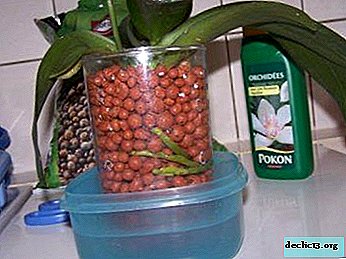 We prepare expanded clay. The size depends on the root system, the thicker the roots, the larger it is worth taking granules. Wash the material well.
We prepare expanded clay. The size depends on the root system, the thicker the roots, the larger it is worth taking granules. Wash the material well.- Expanded clay to fill in with phytohormones and leave for 24 hours.
- The pot needs a plastic, transparent. We make holes for drainage at the level of: 1 cm from the bottom (for a container with a volume of 0.3-0.5 l), 1.5 cm (for a container with a volume of 0.5-1 l), 2 cm (for a container with a volume of 1.5-2 l) . We also pierce holes in the side walls for ventilation.
- We clean the orchid roots from the old soil under running water. Leave for a while to dry.
- Pour the previously prepared mineral into the container, then gently lower the plants, placing them in the center of the pot. The remaining space, to the top, is filled with expanded clay. Place the roots in the upper layers.
- Pour clean, settled water to the level of drainage holes.
Watch the video about planting orchids in expanded clay:
Conclusion
In fact, each grower independently decides in which substrate it is best to grow a pet, and what material should be used for drainage. The main thing - orchids should be comfortable so that it delights with its wonderful, unusual flowering.

 River pebbles, pebbles. Among the useful properties are hygroscopicity and strength. Cons: lack of thermal conductivity, so it is better to put flower pots on the sunny side to maintain heat. Pebbles also weight flower pots. As a preventive measure, the river material should be washed by removing unnecessary sand.
River pebbles, pebbles. Among the useful properties are hygroscopicity and strength. Cons: lack of thermal conductivity, so it is better to put flower pots on the sunny side to maintain heat. Pebbles also weight flower pots. As a preventive measure, the river material should be washed by removing unnecessary sand. We prepare expanded clay. The size depends on the root system, the thicker the roots, the larger it is worth taking granules. Wash the material well.
We prepare expanded clay. The size depends on the root system, the thicker the roots, the larger it is worth taking granules. Wash the material well.

